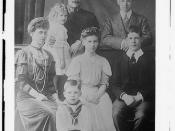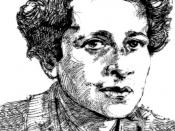In The Human Condition, Hannah Arendt discusses three different spheres and how they are applied to public and private spheres. These definitions were constructed in the 50s and accordingly times have changed. Although Arendt frequently refers to the ancient world, not much has changed to the contemporary times. Arendt argues that the past has been destroyed by modernity Arendt grew up in a time of war and chaos in which she was not welcomed to express her true self or freely practice her religion. Her history undoubtedly biased her to come to her conclusive definitions. Although decades have slipped away, that does not mean that Arendt's arguments do not still hold some truths in them. Arendt used the model of the ancient world, specifically ancient Greece, to create her definitions for household, political, and social. All three of the spheres overlap within one another.
Arendt's definition of social realm deals with taking aspects of the private world and marketing it as mass production to the public.
The social realm takes away from the traditional values of a proper home. According to Arendt, the idea of a social life is taking an aspect from the private sphere and molding it to become a part of the public sphere, "this functionalization makes it impossible to perceive any serious gulf between the two realms; and this is not a matter of a theory or an ideology, since with the rise of society, that is, the rise of the 'household' (oikia) or of economic activities to the public realm, housekeeping and all matters pertaining formerly to the private sphere of the family have become a 'collective' concern" (33). Arendt states that society takes a private matter and drags it into the public life. A contemporary example of Arendt's idea of social sphere is...


